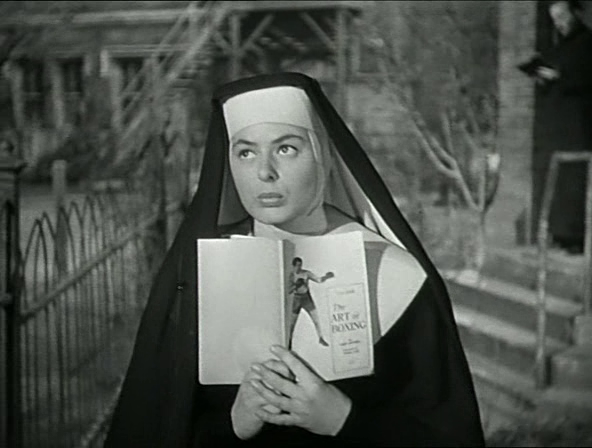A Century of Film is an ongoing series where Devin Wilger watches one movie from each year between 1917 and today. For the year of 1945, it’s The Bells of St. Mary's.
The first minutes of The Bells of St. Mary’s sets up a movie that is a bit more dramatic than the one we actually watch. Father O’Malley (Bing Crosby) is replacing a priest who found the nuns at St. Mary’s school so difficult to deal with that it drove him to madness. Immediately, my mind went to my parents’ experiences in a Catholic school, their horror stories of nuns going mad with power. The series of polite disagreements between well-meaning people that follow are not quite what you might expect. In spite of a dramatic opening, this is a film with nearly no stakes, as O’Malley deals with Sister Mary Benedict (Ingrid Bergman) a nun he generally respects and with whom he has a decent working relationship, as they navigate through a series of surprisingly low-stakes situations.
Writer/director Leo McCarey, who appeared in this space with Duck Soup, is not doing anything nearly as chaotic as that earlier film. The mood of the piece is the exact opposite, two hours of pleasant people being generally respectful to each other even as they disagree. There’s no clouds over the film, no big drama. A crisis will develop but then dissolve as the people involved have a reasonable conversation about it and come to terms with their different positions. In between, Crosby gets to sing - Crosby was a good actor but if you’ve got access to that voice you had better use it - Bergman gets to sing, there are cute animals and cute children. It’s two hours of nice people, which isn’t really a recipe for excitement or drama.
This sounds dull, but it’s actually strangely relaxing. Perhaps why this was a massive hit late in World War II, it is kind of an escapist fantasy to see reasonable people in a low-stakes situation when you’re surrounded by war. It’s an escapist fantasy now, the idea of respectful disagreement between reasonable, good people being almost unheard of in an era of Trump and Twitter. One dreams of a world where people can get along like Father O’Malley and Sister Mary Benedict, and everyone involved just has the best interests of the people around them in mind. It’s a low-stakes antidote to a world where everything else feels high stakes.
Which is not to say that nothing happens, there are plenty of subplots going around, the biggest being the old classic of a greedy real estate developer attempting to shut down the school. Even that is handled in an unexpected way, he’s never a malicious presence and the ultimate resolution of the problem is about as surprising as it is uplifting. A young girl, faced with a difficult home life, boards at the school and struggles to deal with her mom’s new relationship - that relationship is with her father who has returned to the picture, but she doesn’t know that. Two boys keep getting in fights, so Sister Mary Benedict teaches the meeker boy how to stand up for himself, a scene that might not play quite as well to modern audiences but does lead to a pretty quality screenshot. A character gets a disease and there’s debate about whether someone should tell them. The film is happy to stop everything to have a grade one class do a fairly irreverent take on the nativity.
It’s a film about religious people that doesn’t really do much with religion, apart from a joke about a kid named Luther (How did he get in here?). Sure the nuns are in their habits and the priest has his collar and there are plenty of references to God, religion and prayer, but it’s all kind of vague and non-specific. They’re in religious orders because it was 1945 and many schools were run by the church. There’s a lot to be mined out of the life of a nun or a priest, but St. Mary’s has no real interest in it. These characters exist within the context of their career and there’s not much interest in their internal lives. Which is not to say there’s no indication that they have one, Bergman could make a rich, layered character out of a phone book, but it’s not really the priority here.
There is value in a light, gentle comedy about reasonable people being able to overcome their differences. Maybe there’s more value in that now than there has ever been before. There’s not really much in the way of stakes or drama in The Bells of St. Mary’s, but there’s value in a film filled with fundamentally good people.
Next up, 1946’s film is Notorious.



